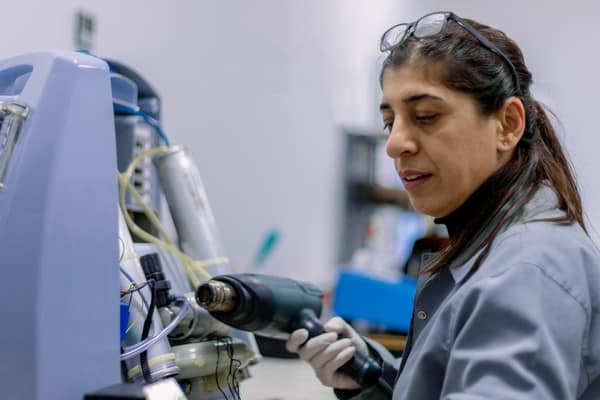Medical Device Manufacturing Outsourcing vs. Insourcing
Posted on December 21, 2020
Roughly 58% of original equipment manufacturers (OEMs) have used a contract manufacturer for a medical device project, according to a study by Medical Design Technology. Nearly 88% of OEMs had a positive experience with a contract manufacturer.
You may compare outsourcing vs. insourcing as you decide how to make the best use of your staff and equipment for an upcoming project. This article takes a look at the benefits of medical device manufacturing outsourcing vs. insourcing, as well as considerations for each.
3 Benefits of Medical Device Manufacturing Outsourcing
The international medical device outsourcing market was worth $104.5 billion in 2019 and, from 2020 to 2027, has an estimated compound annual growth rate of 10.4%, according to a report from Grand View Research. Some of the factors contributing to this growth include increased demand for advanced products, a rise in offshoring manufacturing activities, and a changing regulatory environment.
Below we discuss three potential benefits of medical device manufacturing outsourcing: expertise, cost savings, and efficiency gains.
Expertise
You may outsource because you don’t have the expertise in-house. In these cases, the experience of a medical device manufacturing contractor is an attractive benefit. About 73% of OEMs say a lack of medical device experience is a deal breaker when choosing a manufacturing contract partner, according to Medical Design Technology’s study. If you decide to outsource, find a partner with experience manufacturing the same types of medical devices you need.
Cost Savings
Another reason to consider medical device manufacturing outsourcing is the potential cost savings. Outsourcing medical device manufacturing may cost less than buying new equipment, hiring additional staff, and training current employees. However, outsourcing isn’t a small investment. In fact, the Medical Design Technology study notes that less expensive manufacturing contractors may be of less quality.
Efficiency Gains
Outsourcing medical device manufacturing frees you and your employees up for other tasks. Maybe you have other projects that are a priority or workforce forecasting shows that your team doesn’t have the bandwidth to fulfill a new order. When resource constraints are an issue, outsourcing can help. It also gives your staff time to focus on other tasks, which improves overall efficiency. Some companies may choose medical device manufacturing outsourcing so they have more time for research and development, Grand View Research’s study notes.
3 Benefits of Medical Device Manufacturing Insourcing
From the increasing use of wearable medical devices to 3D printing, global news publication Medical Product Outsourcing lists multiple trends driving the growth of medical device manufacturing. As manufacturing managers adjust to the evolving demands of the industry, monitoring performance and adjusting processes are critical managerial functions.
Download our eBook: Everything You Need to Know About Manufacturing Staffing
Discover the historical context, recent data, and best practices for staffing manufacturing jobs in America. Download our eBook, “Everything You Need to Know About Manufacturing Staffing” for data-driven strategies for staffing manufacturing jobs.
Three potential benefits of medical device manufacturing insourcing include: quality control, flexibility, and employee development.
Quality Control
The biggest benefit of insourcing medical device manufacturing is the improved quality control. When the work is being done in-house, it’s a lot easier to monitor progress, address issues as they arise, and apply lean manufacturing principles. With medical device manufacturing outsourcing, it’s more difficult to do this. Ensuring quality is a top priority among manufacturing managers. Reviewing processing schedules and inventory requirements is easier to do so when the work is close to home.
Flexibility
In light of COVID-19, an article from technology publication MyTechMag notes the importance of reacting quickly to client order changes and maintaining prompt speed to market. Another benefit of insourcing is the flexibility to make changes. If new requirements arise or a process needs to be updated, you can easily communicate with your team and take the next steps. Communicating and implementing changes with a manufacturing contractor might not be as easy. When you insource medical device manufacturing, you have the flexibility to update procedures and respond to changing requirements as needed.
Employee Development
This one’s a long-term benefit of medical device manufacturing outsourcing vs. insourcing. Keeping medical device manufacturing in-house allows you to develop your employees, whether that’s by giving them additional responsibilities or providing training so they can learn new skills. Long term, this keeps your staff sharp—and might spark innovation—as they expand their manufacturing knowledge and skill set. An employee may also take more ownership of the project than the manufacturing contractor. There may even be affordable ways to hire and train new employees to assist with your manufacturing needs.
Outsourcing vs. Insourcing Considerations
If your staff lacks the expertise or time for a new medical device project and your company can afford the upfront cost, it’s worth considering outsourcing the work.
Here are some tips for medical device manufacturing outsourcing success:
- Find a contractor with related experience. Ensuring the contractor has relevant experience may be the difference between quality and mediocre work. Do your research to find contractors who have proven success in the field.
- Set clear expectations. This is another key to ensuring quality outsourced work. Setting clear expectations sets the manufacturing contractor up for success and ensures you get the results you want.
- Communicate often. Staying in frequent contact with your manufacturing partner helps you monitor progress and quickly resolve issues as they arise. Communication also helps foster your working relationship with the partner.
Insourcing, on the other hand, may be the best choice if quality control and nimbleness are important to you. This option keeps you highly involved throughout the process and presents an opportunity to engage your employees.
Here are some tips for insourcing success:
- Set a clear vision for your team. A benefit if insourcing is fostering buy-in from your team. Setting a clear project vision and goals can help do this. It also ensures everyone is on the same page about a new project.
- Check in with staff frequently. This includes checking in for progress updates, but also to see if anything can be improved. Do employees have everything they need? Do they have any project concerns? Is employee attendance consistent? Check in often to identify opportunities for improvement.
- Consider additional staff. Expanding your workforce to meet project demands can help you successfully complete a medical device manufacturing project.
TERRA Staffing Group Can Help Meet Your Manufacturing Needs
Approximately 2.4 million manufacturing jobs may need to be filled between 2018 and 2028, according to a joint study by Deloitte and the Manufacturing Institute. TERRA Staffing Group works with manufacturing companies nationwide to help them meet their staffing needs. Find one our branches today to let us know how we can help.
Categories: Innovation & Change Management, Staffing Tips & Recruiting Trends
Tags:






